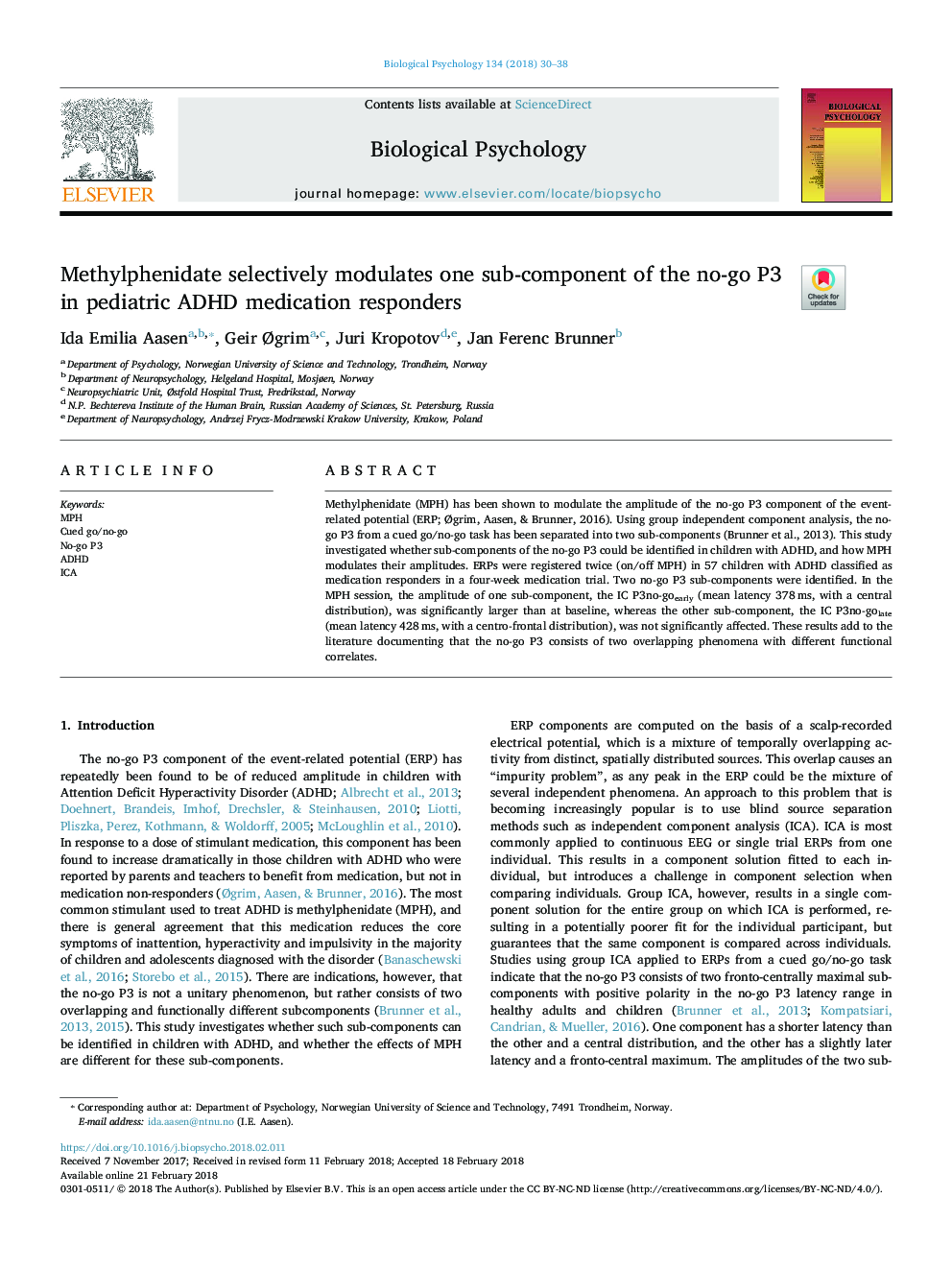| Article ID | Journal | Published Year | Pages | File Type |
|---|---|---|---|---|
| 7278156 | Biological Psychology | 2018 | 9 Pages |
Abstract
Methylphenidate (MPH) has been shown to modulate the amplitude of the no-go P3 component of the event-related potential (ERP; Ãgrim, Aasen, & Brunner, 2016). Using group independent component analysis, the no-go P3 from a cued go/no-go task has been separated into two sub-components (Brunner et al., 2013). This study investigated whether sub-components of the no-go P3 could be identified in children with ADHD, and how MPH modulates their amplitudes. ERPs were registered twice (on/off MPH) in 57 children with ADHD classified as medication responders in a four-week medication trial. Two no-go P3 sub-components were identified. In the MPH session, the amplitude of one sub-component, the IC P3no-goearly (mean latency 378â¯ms, with a central distribution), was significantly larger than at baseline, whereas the other sub-component, the IC P3no-golate (mean latency 428â¯ms, with a centro-frontal distribution), was not significantly affected. These results add to the literature documenting that the no-go P3 consists of two overlapping phenomena with different functional correlates.
Related Topics
Life Sciences
Neuroscience
Behavioral Neuroscience
Authors
Ida Emilia Aasen, Geir Ãgrim, Juri Kropotov, Jan Ferenc Brunner,
